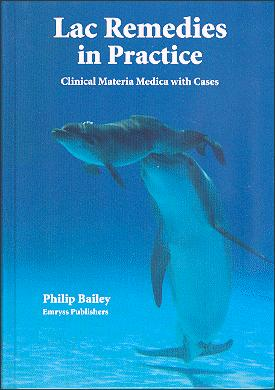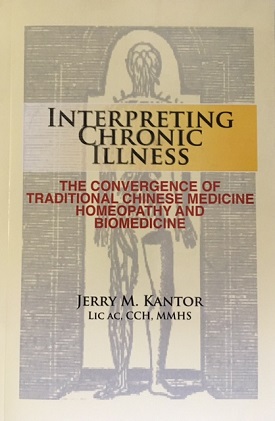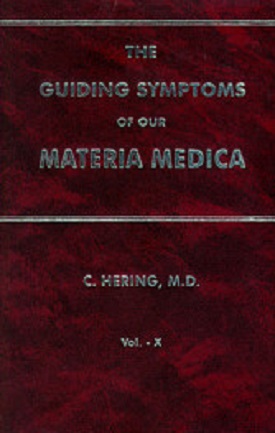Description
We expect to have copies of this book some time in July 2024.
Jan Scholten, MD, is one of modern-day homeopathy’s most respected authors and homeopaths. Several of his books are consider seminal works, including:
This NEWER book explores homeopathic materia medica
PLUS this book is very reasonably priced!
The title of the painting on the cover is “the Refugees”. The refugees are like the restless personalities in this book, who seek peace, but cannot find it in a changing, unstable world. We all have several to many personalities. Some we like, others we dislike. But the more we like them and the more we identify with them, the more the personalities get us in their grip. They gradually start taking over, limiting and fixing ourselves. In the end they start producing diseases.
The cure is letting go of those personalities, by becoming conscious of them. By realising that they are defence mechanisms that are one-sided and rigid, taking away our freedom. Cure is realised by getting into the problem and pain, instead of running away from them. By becoming aware of them, the self-healing power can act again and the personalities start losing their power. Then freedom is restored and peace sets in. Peace is part of our Selves.
All personalities have a goal, feeling about that goal and ways how to handle to achieve or hold that goal. In this book the goals, feelings and ways of acting are classified in a natural way, as given by the Periodic system of Elements. This way the personalities and accompanying diseases can be classifies systematically. This gives medicine a scientific system. With the clear formulation and the classification of Personalities desire, it has become a much easier task to find a truly suitable remedy for our patients. When I read this book, I felt happy and light. In my hands I hold a solution to the suffering and confusion of us humans. It is science in its best sense: it formulates the goal, namely the cure, and gives us a classification in which, with the help of systematic thinking, one can find the appropriate remedy.
Table of Contents
0.1 Acknowledgements 5
0.2 Foreword 6
0.3 Introduction 7
1 Disease 8
2 Cause 10
3 Personalities 13
4 Classification 20
5 7 Series: Goals 23
6 18 Stages: Actions 27
7 8 Phases: Positions 32
8 5 Kingdoms 34
9 Diagnosis 37
10 Therapy 41
11 Cue 43
12 Multiple Personalities 46
13 Self 49
14 History 52
15 Discussion Epilogue 58
1 Appendix 1 Theory 61
1.1 Disease as creation 62
1.2 Classification 67
1.3 Cycles of life 72
2 Appendix 2 Kingdoms 75
2.1.1 Mineral kingdom 76
2.1.2 Element theory 76
2.2 Bacterial kingdom 82
2.3.1 Plant kingdom 83
2.3.2 Plant theory 84
2.4.1 Animal kingdom 90
2.4.2 Animal theory 91
2.5 Human kingdom 96
3 Appendix 3 Series 97
3.0.1 Series 98
3.0.2 Series and regions 99
3.0.3 Series and psychology 104
3.1 Hydrogen series 110
3.2 Carbon series 112
3.3 Silicium series 114
3.4 Iron series 116
3.5 Silver series 118
3.6 Gold series 120
3.7 Uranium series 122
0.1 Acknowledgements
The first thanks go to my patients. Much of this book is developed by their information, I want to thank my parents and family for all the support they’ve given me in my life, and especially my sister Toos and my brother Frank for their moral support.
Many colleagues and homeopaths have directly or indirectly contributed to this book. I thank them for their ideas. For proof reading the text I want to thank Maria Davits, Martin Jakob, Heidi Brand, Christa Gebhardt, Jürgen Hansel, Pieter Kuiper, Pim Vreeswijk and Deborah Collins. Especially the discussion and corrections of Martin Jakob, Pieter Kuiper, and Deborah Collins have been of great help.
Heidi Brand has pushed me in writing this book by interviewing me about my ideas. Her interviews will be published in “Gespräche mit Jan Scholten”.
I thank my dear friend Martin Jakob for writing his foreword. I thank Robert Müntz from Remedia for preparing remedies for me and
many patients. His remedies made many discoveries possible which are presented in this book.
I thank my wife Maria Davits for all the love and support she gave while writing this book and for all our years together. I also thank her for allowing me to use her beautiful portrait paintings for the cover design.
They are like the personalities in this book, who seek peace, but cannot find it in a changing, unstable world.
Silent thanks go to all the musicians who have inspired me: Bach, Leonard Cohen, Pink Floyd, Jimi Hendrix, Fatoumata Diawara, Ibrahim Maalouf, Enya, Dhafer Youssef and many others.
Thanks go to all the scientists who have inspired me and handed over their knowledge. Special thanks go to Hahnemann, Gabor Maté, Carl Jung and Richard Schwartz.
Special thanks go to spiritual leaders that have shown me very valuable insights, especially Eckhart Tolle, Lao Tze and Ramana.
Foreword by Martin Jacob
Dr. Jan Scholten’s work over the last 30 years is, in its totality, a jewel.
This book is the fine cut, the polish that gives one clarity of view and a depth of insight into the knowledge of who we really are as humans, the essence of illness, which is the expression of a hardened identification with a personality, and the healing of it.
One of the brilliant features of J.S.’s work is that he recognised the psychological classifications, e.g. of Abraham Maslow with his pyramid of human needs, as expressions of needs of different personalities in us humans. For example, the child’s need for protection and security is an expression of the personality of a child. It can be a problem of a child, but also of a 50 year-old man.
In his book “Homeopathy and the Elements”, with the Periodic system described in it, he created a precise and clear classification of the different personalities of humans and the problems associated with them. The Periodic system is fixed and unchangeable because of its properties. Its elements are the formative components of our world, it is the naturally given structure and therefore also a safe and stable base for the classification in the Plant theory, as well as for the other kingdoms of homeopathy.
Jan Scholten has given homeopathy a scientific system which in the Plant theory comes to full bloom in the near future. With the clear formulation and the classification of a personality’s desire, translated into Series, Phases and Stages, it has become a much easier task for homeopaths to find a truly suitable remedy for our patients. We and our patients will experience healing and thus freedom through his incredible work.
When I read this book, I feel happy and light. In my hands I hold a solution to the suffering and confusion of humans. It is science in its best sense: it formulates the goal, namely the cure, and gives us a classification in which, with the help of systematic thinking, one can find the appropriate remedy.
0.3 Introduction
This book is about disease, healing and health. It presents a vision developed over the past 40 years based on practical experience. In it, 3 main themes are described.
Psyche and Personalities
The first theme is that our psyche is the cause of illness. Psychological trauma precedes the emergence of material, physical abnormalities. It is the experience in ancient traditions and in many alternative therapies.
Trauma is not isolated, it is accompanied by a whole complex of visions, thoughts, emotions, feelings and sensations. We can call such a complex a personality. Personalities have capacities, they are survival strategies.
But when they become domineering, they create problems, psychological, social, and physical.
Classification of diseases and personalities
The next step is to classify these personalities. It has been shown that this can be done very well with the rows and columns of the Periodic System, the themes of the rows and columns. What is special about this is that it connects physics with psychology, and further with biology, evolution, religion and philosophies of life. This vision makes the world a whole again. This classification is basically very simple. First, personalities have a purpose: a desire, wish, or need. The second is how the personality stands in relation to that goal: feelings, thoughts, insecurities, and so on.
The application of the classification can be complex.
Self
We may think we are our personalities. But we are not, we have personalities. If our character changes we are still ourselves. It is our sense of self.
In ancient religions, it is called the Self. It is consciousness and it is good and loving. Humans in their essence are spiritual beings, good and wise. On the other hand, human beings have many personalities, including talents and traits, defence mechanisms, which can cause difficulties, problems and even disasters.
Vision
Looking at the world and fellow human beings in this way creates much more compassion and empathy. Then we see through the behaviours, abnormalities and diseases and can see the brilliant part in every human being. We can start to see and let go of our identification with our personalities and become more ourselves as a result.
This vision brings an understanding of the human condition as inwardly perfect but outwardly problematic. It brings freedom, healing and compassion for yourself and others.






Reviews
There are no reviews yet.